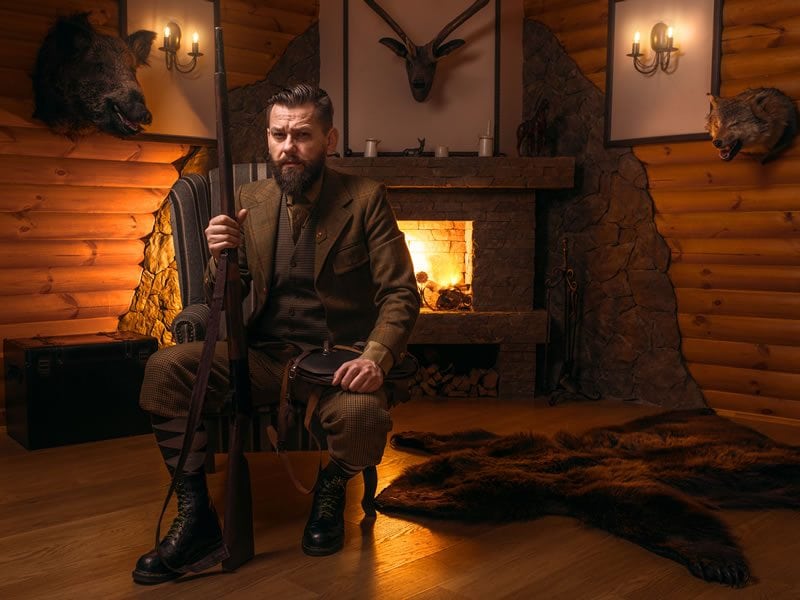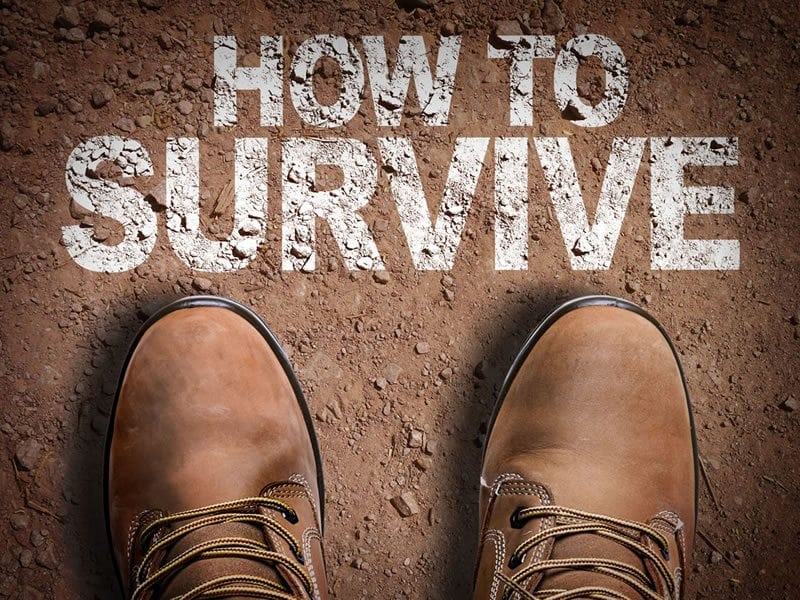Seasonal; Team; Individual; Extreme; Gear;
Darren Cahill: 99 Percent of Coaches Are Without Income Right as Pandemic Continues
The Aussie coaching legend weighs in on the difficulties that an underappreciated segment of the tennis population is facing. During the last few months the financial fate of tennis players, the tours and their events have been spoken of and discussed from myriad perspectives, but we’ve not heard too much from the coaches’ point of view, perhaps because it is difficult for these critical but often overlooked assets in our sport to speak without calling out their employers or the tours, which could potentially jeopordize their tenuous job security. Or, perhaps, tennis coaches are just not given very much consideration by a general public that deifies coaches in other sports, such as football and basketball.
Today in a piece published at the website Tennis Majors by French journalist Carole Bouchard, we read thoughts from many of the coaches, who shared a common story of financial difficulty.
Tennis on hold because of the #Covid19 pandemic, we investigated the situation of the #ATP and WTA coaches, as many are without income during this time. A feature by @carole_bouchard. #LongFormhttps://t.co/p9gK4Sadp6
THREAD ⏬⏬
— Tennis Majors (@Tennis_Majors) April 29, 2020
“There is no security for being a tennis coach,” said coach Darren Cahill, the current coach of Simona Halep and the former coach of Lleyton Hewitt and Andre Agassi. “99 percent of the coaches at the moment are not getting paid. And it’s just like the players as well: unless you’re one of the top players and have contract money, they’re not getting paid either. So being a coach on the WTA or the ATP at the moment is incredibly difficult. For the moment, the coach is not protected at all.”
The pandemic has made things extremely difficult in the world of professional sports right now, and these difficulties are highlighting issues among the coaches that were long in place but didn't seem quite as urgent. Unfortunately for tennis and the coaches, the financial woes may just be beginning. A business that relies on large groups of fans coming together to cheer on their sporting heroes will be one of the last to recover from the Coronavirus pandemic, and while governments are now easing restrictions and eager to start rebuilding their battered economies, a sport like tennis, based on international travel and mega spectators, is certainly a long way off from getting its mojo back.
Tennis has been struck harder than other big sports, whose coaches are typically under contract. That’s typically not the case with tennis where the contracts are sometimes by the week and often dependent on prize money, of which there is none these days.
Some coaches, like Thomas Drouet of France (Wang Qiang’s coach) and Sam Sumyk, former coach of Victoria Azarenka, Garbiñe Muguruza and Anastasia Pavlyuchenkova, have called for something akin to a union.
Coaches, facing the weakness of their status, call for a union https://t.co/U39D6eFAFj
— Brad Gilbert (@bgtennisnation) April 29, 2020
“A change of system should have happened a long time ago already,” Sumyk told Bouchard. “There should be a common force in our profession, perhaps we would call it a union or a platform, which would defend our interests and provide us with some security.”
When you think of the many lower-ranked tennis players that are struggling financially during the pandemic, spare a thought for the coaches. Many of them will end up far worse off than their players, end there is currently no relief in sight and not much spotlight being shined on their difficulties.
Darren Cahill: 99 Percent of Coaches Are Without Income as Pandemic Continues
The Aussie coaching legend weighs in on the difficulties that an underappreciated segment of the tennis population is facing. During the last few months the financial fate of tennis players, the tours and their events have been spoken of and discussed from myriad perspectives, but we’ve not heard too much from the coaches’ point of view, perhaps because it is difficult for these critical but often overlooked assets in our sport to speak without calling out their employers or the tours, which could potentially jeopordize their tenuous job security. Or, perhaps, tennis coaches are just not given very much consideration by a general public that deifies coaches in other sports, such as football and basketball.
Today in a piece published at the website Tennis Majors by French journalist Carole Bouchard, we read thoughts from many of the coaches, who shared a common story of financial difficulty.
Tennis on hold because of the #Covid19 pandemic, we investigated the situation of the #ATP and WTA coaches, as many are without income during this time. A feature by @carole_bouchard. #LongFormhttps://t.co/p9gK4Sadp6
THREAD ⏬⏬
— Tennis Majors (@Tennis_Majors) April 29, 2020
“There is no security for being a tennis coach,” said coach Darren Cahill, the current coach of Simona Halep and the former coach of Lleyton Hewitt and Andre Agassi. “99 percent of the coaches at the moment are not getting paid. And it’s just like the players as well: unless you’re one of the top players and have contract money, they’re not getting paid either. So being a coach on the WTA or the ATP at the moment is incredibly difficult. For the moment, the coach is not protected at all.”
The pandemic has made things extremely difficult in the world of professional sports right now, and these difficulties are highlighting issues among the coaches that were long in place but didn't seem quite as urgent. Unfortunately for tennis and the coaches, the financial woes may just be beginning. A business that relies on large groups of fans coming together to cheer on their sporting heroes will be one of the last to recover from the Coronavirus pandemic, and while governments are now easing restrictions and eager to start rebuilding their battered economies, a sport like tennis, based on international travel and mega spectators, is certainly a long way off from getting its mojo back.
Tennis has been struck harder than other big sports, whose coaches are typically under contract. That’s typically not the case with tennis where the contracts are sometimes by the week and often dependent on prize money, of which there is none these days.
Some coaches, like Thomas Drouet of France (Wang Qiang’s coach) and Sam Sumyk, former coach of Victoria Azarenka, Garbiñe Muguruza and Anastasia Pavlyuchenkova, have called for something akin to a union.
Coaches, facing the weakness of their status, call for a union https://t.co/U39D6eFAFj
— Brad Gilbert (@bgtennisnation) April 29, 2020
“A change of system should have happened a long time ago already,” Sumyk told Bouchard. “There should be a common force in our profession, perhaps we would call it a union or a platform, which would defend our interests and provide us with some security.”
When you think of the many lower-ranked tennis players that are struggling financially during the pandemic, spare a thought for the coaches. Many of them will end up far worse off than their players, end there is currently no relief in sight and not much spotlight being shined on their difficulties.
Racquet Review: Yonex Ezone 98
Fans of the DR 98 will not be disappointed with the new and improved Ezone.
One of the more versatile tweener frames on the market has been updated for 2020—the Yonex Ezone 98. The weapon of choice for Nick Kyrgios and Naomi Osaka has received myriad enhancements to help players of all levels and push this racquet into the 21st century.
Here are a few of the improvements:
This sixth generation Ezone has a new strong, yet elastic material in the throat called M40X which improves the racquet’s flex and maintains tour level stability. Comfort is upgraded thanks to the addition of Vibration Dampening Mesh (VDM) in the racquet handle which filters out unwanted vibrations. Yonex carries over their signature Isometric head shape and Liner Tech string technologies for increased power, comfort and sweet spot. Fans that were true loyalist to the Ezone DR 98 model may find this updated version even better, but play tester Chris Virk-Brown thought be better test it to make sure.
Here’s what he found:
Groundstrokes
Right from the start I could tell I was going to enjoy this upgraded Ezone 98. Although the specs are still similar to previous versions, I could feel a true difference in control and flex when I was hitting and it made me fall in love. The flex is a little firmer than before which gave me extra help when I needed it most. There is a great balance of power and control which allowed me to comfortably blast my shots deep into the corners and take offense right away. Compared to its predecessor, I felt there was more directional accuracy when I wanted to go for aggressive targets and put away balls. Racquet head speed felt even easier to generate and left me in winning positions on court.
Volleys and Serves
I was very surprised by my net play with the new Ezone 98. With the last version of the Ezone’s, I didn’t have much success coming to net and hitting comfortable volleys. However, this updated version I found a completely different result and it reminded me of the DR version. It has great stability and flex on contact thanks to the added M40X technology in the throat. Power was easy to generate thanks to the slightly firmer flex, and it doesn’t lose out on touch or feel. The frame was never sluggish in quick exchange volleys and I always felt confident getting the upper hand on my opponent. No matter the pace of the ball hit directly at me, I felt at ease hitting volleys with this frame.
Serves felt very effortless with this frame and allowed me to commanded the court. The solid weight and easy racquet head acceleration gave me plenty of pop and penetrating through the court on my first serves. Slice and kick serves were also painless to generate thanks to the fairly open 16 x 19 string pattern. It still has a more controlled feel on serve which allowed me to pick my spots and help keep returners off balance. Those wanting a little more free serving power may want to hit with the Ezone 100.
Feel/Comfort
Similar to the VCore Pro line, this racquet has improved in feel and comfort. The new VDM mesh in the handle did exactly what it was advertised to do soaking up a ton of shock. Off center and frame hits were much more bearable helping me play longer without any elbow troubles. The racquet feels smoother across all areas of the string bed without any hint of buzzing or jarring. Although the flex rating is higher, players should not shy away from trying this frame out.
In Summary
All in all, the new Yonex Ezone 98 truly is an upgrade from its predecessors. There is improved control, flex and shock absorption making it easy for any advanced player to command the court from the baseline to the net. The unique innovative technologies improve the overall performance of the frame and will make you want to switch. Those who are die-hard fans of the buttery-feeling Ezone DR 98 will love this newly updated Ezone 98.
Venus Talks Goals, Game and Life After Tennis
Venus Williams opens up dreams, diet and father Richard Williams in a wide-ranging Q&A.
Venus Williams is a visionary eyeing a rousing reunion: playing doubles with sister Serena Williams at the 2021 Tokyo Olympic Games.
Watch: Venus & Rob Gronkowski Work Out With Their Trophies
In a wide-ranging Q&A she conducted on her YouTube channel, Venus touched on several topics, including her game, goals, diet, health of father Richard Williams and her ultimate aim in the game.
Venus, who won the mixed doubles silver medal with Rajeev Ram at the 2016 Rio Olympics, made history in her Olympic debut sweeping gold medals in singles and doubles, alongside Serena, at the 2000 Sydney Olympics.
The four-time Olympic gold-medal champion is pumped to play doubles with Serena again.
“Williams sisters doubles action has to happen soon—I’m missing doubles,” Venus says at about 10:10 of the video below. “They moved the Olympics to next year so hopefully Serena will play with me.
"Hopefully, we’ll qualify. Hopefully, the world will be okay, and we’ll be playing doubles real soon."
Venus, who celebrates her 40th birthday on June 17th, says she has no desire to coach another pro when her playing days are done.
“No, you know why?” Because they don’t listen,” she jokes at about the 5:15 mark of the video. “And you tell them to win the point and they lose the point. Can’t put up with that. Also, I don’t want to have anymore sun on the skin than I’ve had. I swear I’m gonna turn into a raisin.
“If I coach people it will just be at night when there’s no sun. And if they have a day-time match, I won’t be there. Simple.”
Though she won't coach pro tennis, the five-time Wimbledon champion, who revealed she's called "VeeVee" by niece, Olympia, says she's love to work with kids when her playing days are done.
“Actually I do love being on court with kids," Venus says. "So I think kind of once I’m dong playing tennis I’ll probably take a little break. And then help the young kids a little bit.
"You know they don’t need me everyday, but I’m gonna come out and say bend your knees.”
Asked about the health of her father, and original coach, Richard Williams, who has reportedly been battling illness, Venus replies: “My dad is going great. He’s a character out of characterville and I love him. There’s never a dull moment with that guy and he’s a great dad.”
The devoted 90 Day Fiance fan once famously described herself as “a chegan—a vegan who cheats” also dishes on her craving for a Cookie Monster-style diet.
“My favorite foods to eat are the ones I should not be eating: pie, cake, cookies, donuts, candy,” Venus says. “But let me tell you something: I have discovered that I love asparagus—but just not cooked. So I chop if up in little pieces, put in olive oil, salt and pepper, red pepper, truffle oil…delicious.”
Photo credit: Mark Peterson/Corleve
Thiem Opposes Djokovic-Led Relief Effort
"I prefer to donate to people or institutions that really need it," Australian Open finalist says.
Dominic Thiem isn't planning on donating to the Novak Djokovic-led relief effort to help lower-ranked players.
Thiem says the struggle to rise from tennis' lower ranks is part of the process all pros face and he doesn't support the plan, initiated by Djokovic and supported by Roger Federer and Rafael Nadal, to give money to lower-ranked players trying to survive the sport's shutdown during this coronavirus crisis.
More: Financial Relief Coming for Lower-Ranked Players
"I know the Futures Tour and played there for two years. There are a lot of people who don't give everything to sport," Thiem told Krone.at sports editor Michael Fall in an interview. "I don't see why I should give money to such people. I would prefer to donate to people or institutions that really need it."
The ATP and WTA jointly announced continued suspension of the pro circuit until at least July 13th due to the coronavirus outbreak, though that day may well be extended.
The three-time Grand Slam finalist says none of today's top players received charity in their rise up the rankings and points out there are no guarantees in tennis unlike some team sports.
"None of us top people got it as a gift. We had to fight our way up," Thiem told Krone.at. "I'm not guaranteed in any profession to make a lot of money at some point.
"No tennis players are fighting for survival, not even the ones down below. Nobody has to starve."
Earlier this month, ATP player council president Djokovic said he's in discussions with Federer and Nadal about donating to a relief fund for lower-ranked players.
"I spoke to Roger and Rafa a few days ago and we had a conversation about the near future of tennis," Djokovic said. "How we can contribute to help lower ranked guys who are obviously struggling the most. A majority of players ranked between 250 to 700 or 1,000 don’t have federation support or sponsors and are independent and left alone.
"Players hopefully will contribute collectively to the relief fund that the ATP will distribute using models and criteria. … hopefully between $3-4.5 million will be distributed to lower-ranked players."
Last week, the ITF issued a statement supporting a player relief program with contributions from the sport's stakeholders during this pandemic.
"With so much uncertainty around when it will be safe to restart the professional tennis tours, the international governing bodies of world tennis can confirm they are in discussions to create a Player Relief Program to provide much-needed assistance to the players who are particularly affected during this time of the coronavirus (COVID-19) crisis," the ITF announced. "These discussions have been progressing well and details are being finalized with an announcement expected in the near future.
"Already agreed is that the ATP and the WTA will administer the Player Relief Program and all seven stakeholders will make a significant contribution."
Photo credit: Mark Peterson/Corleve
Wilander: Tennis Needs to Attract a Younger Audience to Grow
The Swede weighs in on Roger Federer's viral tweet about a union between the tours. By: Chris Oddo | @TheFanChild | Friday April 24, 2020
Seven-time major champion Mats Wilander has seen generations of tennis come and go, but nothing like what is happening to the sport today as the Coronavirus pandemic grips the globe and threatens to wreak financial havoc on the sport.
These are unprecedented times and prescient Wilander recognizes that tennis is at a crossroads at the moment, as the game's most iconic stars approach closer to the end of their careers while the sport is effectively quarantined and in danger of not returning until 2021.
Some good points from Mats Wilander here. Hearing a lot about the average age of tennis fans/consumers and have experienced this perusing analytics over the years for sure.
Says Time for Re-Branding of Tennis https://t.co/XghkzWzyD2
— Chris Oddo (@TheFanChild) April 24, 2020
Wilander says the best way to deal with the current turbulence is with bold decision making that will enable the game to engage younger fans in new regions that could be growth engines for the sport.
"We have a new breed of men and women that are really exciting, great athletes, great attitude but they are missing out on a bit of the limelight while the likes of Roger Federer, Rafa Nadal and Novak Djokovic continue to play,” the Swede told Reuters.
"Now is the time to re-brand the sport a little to attract a younger audience. Maybe we can see more men's and women's combined events so the young players can be marketed better."
In light of Federer’s tweet about future collaboration between the WTA and ATP Tours, Wilander says that now is a good time to create more cooperation between the men’s and women’s tours. He feels that the tours have always been on the right side of history in terms of equal prize money at the majors, but admits that there are logistical and financial hurdles to weed through before a true union can be made.
"Tennis has always been at the forefront of equality between men and women's prizemoney," Wilander said. "This is a perfect time to somehow make it a working relationship where we combine.”
ATP CEO Andrea Gaudenzi has shown a keen interest in working with the women’s tour ever since he took over the helm from outgoing Chris Kermode in January. The Italian has helped the tours jump start a joint-television show called Tennis United and he has talked regularly in interviews about how the women lend a competitive advantage to tennis as a global commodity in comparison with other major sports.
“It is extremely important and I think it is one of our biggest advantages towards our competitors,” Gaudenzi said in an interview with ATPWorldTour.com last week. “Not only do we have a great women’s product, but also our audience is fairly split among women and men. A combined event, I strongly believe, is a better event both on site and [through the] media. It is just great. The variety is great. It is really a no-brainer and actually, we are lucky to be at the forefront in that regard.”
Wilander also adds that tennis needs to tackle the issue of its aging fanbase. Many believe the key to a profitable future will hinge on the sport’s ability to attract more youth in its following.
"Some tournaments wouldn't work as men's and women's event but others would. It's about demographics and being flexible and adapting to the market. But it's a necessity for tennis to attract younger fans going forward. The average age of the tennis fan is over 50."
Report: Roland Garros Set to be Postponed by Another Week
Le Parisien reports that Roland Garros will soon announce a move to a later time slot. Roland-Garros will, according to reports by Sandrine Lefèvre of Le Parisien, be postponed for another week, to be held from September 27 to October 11, 2020.
Tennis : Roland-Garros décalé au 27 septembre https://t.co/4tzVKSfSPM
— Le Parisien – Sports (@LeParisienSport) April 23, 2020
An official report from Roland Garros or the FFT has yet to come.
The tournament originally sent shockwaves across the tennis establishment when it rescheduled from Late May to the September 20 – October 4 time slot in mid-March. The FFT has reportedly gone back to the table and worked with the WTA and ATP Tours on shifting the date back by a week in order to give the players another week of rest after the US Open.
The new date could hypothetically add room for several clay court events in Europe before Roland Garros begins, but many remain skeptical that the tournament will be played at all due to the Coronavirus pandemic.
France, Italy and Spain have each suffered over 20,000 deaths due the pandemic but the numbers are finally starting to level off. Still, that doesn’t change the grim realities of the virus, which are that there is no vaccine and many fear a second wave as temperatures start to cool down in the northern hemisphere in the autumn.
The US Open and the tennis tours are currently waiting to make an announcement on the North American hardcourt season this summer. Currently all tennis at the professional level is cancelled until at least July 13.
Murray: Skeptical Roland Garros Will Be Played
Former world No. 1 doubts tennis will resume by September.
Andy Murray will be ready to play Roland Garros in September—he just doesn't envision tennis resuming by then.
The former world No. 1, who has been sidelined since last November recovering from a bone bruise in his pelvis, told CNN he will be fit for the French Open, but doubts the clay-court major will be contested due to the coronavirus crisis.
Roland Garros, originally scheduled for May, made the unilateral decision to move to September 20th—one week after the US Open ends. Murray says tennis' global nature will make it one of the last sports to return.
“I would definitely play on the clay if it goes ahead. I’m a bit skeptical whether it will,” Murray told CNN. “I would imagine tennis would be one of the last sports to get back to normality because you’ve obviously got players and coaches and teams coming from all over the world into one area. I would be surprised if they were back playing sport by September-time."
Murray's former coach, Hall of Famer Amelie Mauresmo, has said tennis cannot safely resume into there is a vaccine for COVID-19. Murray says travel bans currently in place in some countries would have to be diminished or removed in order for tennis to resume.
“You have to feel like the whole world is working normally again and travelling normally before tennis would go back, especially the major competitions," Murray told CNN. “If you took the French Open, let's say things in Europe have improved, but there are certain countries that might still have issues.
“If you then have a tournament where people or players from a certain continent or countries are not allowed to come in to compete. I think the tournament loses.”
The three-time Grand Slam champion made an inspired return to tournament tennis last season that was eventually cut short by the pelvis injury, which he suffered in Madrid at the Davis Cup. At the time it was not considered to be a serious setback, but it has proved difficult for the father of two. Many thought Murray had cleared his biggest hurdle after he returned from his second hip surgery in the summer of 2019 and later claimed an emotional title at Antwerp in October.
The only man to successfully defend the Olympic gold medal in singles, Murray said he was showing symptoms of coronavirus infection last month, but self-isolated and was never actually tested for COVID-19.
“I was a little bit sick for two or three days about four weeks ago,” Murray said. “So actually, before the beginning of when the quarantine started, I was sort of isolating for probably four or five days before that.
“Most people I've spoken to have had some sort of symptoms and felt a little bit sick, but it's quite difficult to know whether you have actually had the virus or not. And obviously, the test should be saved for people that are in severe situations and the frontline NHS workers in this country."
Photo credit: Mike Frey/Rolex Shanghai Masters Facebook
Tips For Playing Tennis Safely In Coronavirus Climate
USTA issues a list of tips for playing safely during COVID-19 pandemic.
As the weather warms and states begin to slowly open for business, recreational players are poised to hit the courts.
How do we safely play tennis amid the coronavirus crisis that has claimed the lives of more than 46,000 Americans?
The USTA today issued a list of tips for playing safely during COVID-19 pandemic.
First and foremost, make sure you live in a community where stay-at-home or shelter-in-place restrictions have been modified or listed.
The White House issued guidelines for Opening Up America Again, a three-phased approach it says is based on the advice of health care experts. Read that plan here.
Tennis can be great exercise and a welcome source of stress-relief during this coronavirus shutdown. The fact that it's a non-contact sport played on a 78-foot long court makes tennis an ideal social-distancing sport.
If you're concerned about contracting the virus through touching a tennis ball, the USTA says that's unlikely but urges precautions while playing.
"Although there is no specific evidence that tennis balls can spread COVID-19, we know that contamination by respiratory droplets from an infected person can potentially survive on hard surfaces up to three days," the USTA said in a statement. "If you choose to play tennis, be sure to practice these safety tips and recommendations."
• Make sure that your state and region allow tennis play, satisfy the Federal Government’s gating criteria and have entered Phase One of the Phased Comeback.
• States and regions with no evidence of a rebound and that satisfy the gating criteria a second time may proceed to Phase Two of the Phased Comeback, in which all individuals, when in public recreation areas, should maximize physical distance from others.
• Be aware that although restrictions are eased when your state and region move from Phase One to Phase Two or Phase Three of the Phased Comeback, safety precautions must remain in place until there is a universal vaccine or effective treatment for the coronavirus.
• The USTA Medical Advisory Group highly recommends competitive players ease their way back into play prior to competition. Given the layoff from competing, players will be more susceptible to under-training, over-use and other injuries. The USTA strongly recommends at least three weeks of on court and off court conditioning before competition begins.
• Arrange to play only with family members or others who live in your household or with individuals who are considered to be low risk.
• Do not play if any of you:
Are exhibiting any symptoms of the coronavirus: mild to severe respiratory illness with fever, cough and difficulty breathing, or other symptoms identified by the CDC.
Have been in contact with someone with COVID-19 in the last 14 days.
Are a vulnerable individual and your state and region is in Phase One or Phase Two. A vulnerable individual is an elderly individual and/or an individual with serious underlying health conditions, including high blood pressure, chronic lung disease, diabetes, obesity, asthma and those whose immune system is compromised such as by chemotherapy for cancer and other conditions requiring such therapy.
Photo credit: Mark Peterson/Corleve
Gear Review: Djokovic Head Bags
Christopher Virk-Brown takes a look at the three versions of the new Head bags designed for Novak Djokovic
We saw Novak Djokovic dominate during the 2020 Australian Open and capture his 17th grand slam title earlier in the year. To coordinate with the new Speed racquets, Head has released their new lineup of Djokovic Tennis Bags which we saw the World No.1 use down under.
Tennis Express’ Christopher Virk-Brown gives us the skinny on the three versions that tennis players can find on the market.
For the serious players out there, The 12R Monstercombi is the largest of the group carrying up to 12 tennis racquets, and features 2 main racquet compartments, one with Climate Control Plus Technology to help protect your racquets from the elements. In the middle are 2 separate compartments: one ventilated for shoes or wet apparel, while the other fits extra gear and accessories. There’s an additional interior accessory mesh pocket and on the outside are 2 small zippered pockets. On bottom are padded backpack straps and on top are grab handles for easy carrying.
The Djokovic 6R Combi Tennis Bag is essentially the same as the 12 pack, but with a little less space in the middle. There are two main racquet compartments to fit up to 6 racquets. One of the main racquet compartments is lined with CCT+ for extra protection. There’s no separate shoe compartment, but there is enough room in one of the large compartments to toss in your shoes or extra clothes. On the outsides are 2 zippered accessory pockets, and on the bottom are padded straps.
Proud of our two world number 1 players. 🌏1️⃣🔝 What else does the year have in store for @DjokerNole and @ashbarty? #TeamHEAD pic.twitter.com/iDd2fYDs5D
— HEAD Tennis (@head_tennis) February 20, 2020
The streamlined “DjokoPack” is perfect for players on-the-go, or coaches. It has a slightly distinguished shape with round edges and an elegant black design. The main back compartment is padded and fits up to 2 racquets securely with very cool locking zippers. There’s another large compartment that has enough room for extra clothing, towels and even an ipad, tablet or large gadget of choice. On front is a smaller zippered pocket perfect for personal items like your cell phone, wallet or an extra set of string. On the sides are 2 smaller zip pockets for loose accessories, and on bottom is a separate ventilated shoe pocket. On the back are padded backpack straps along with mesh padding to protect your bag from getting sweaty after play.




















